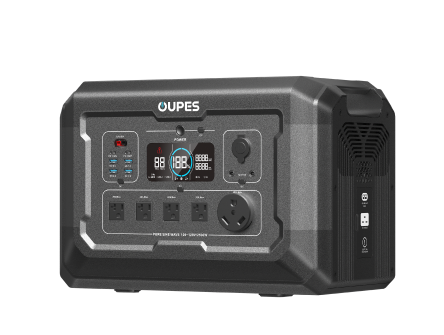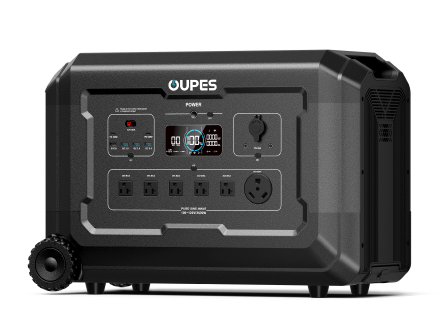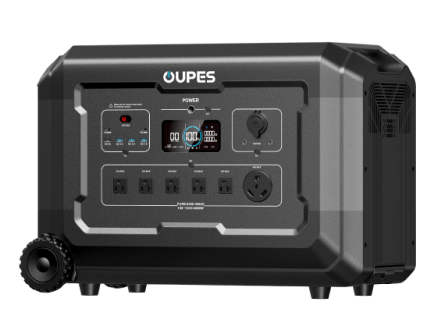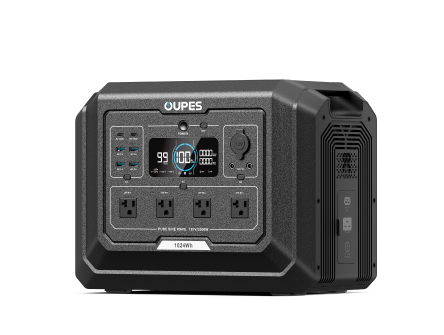
Portable power stations have quickly become an essential tool for off-grid living, travel, emergency preparedness, and everyday convenience. Whether you're planning a weekend camping trip, prepping for power outages, or working remotely in nature, a portable power station gives you reliable energy wherever you are.
But one of the most common questions people ask before buying one is: how many hours does it actually last? The answer depends on various factors, including the capacity of the power station, the devices you’re powering, and how efficiently the unit delivers energy. In this article, we’ll explore these factors in depth to help you understand what kind of runtime you can expect from a portable power station—and how to maximize it.
Understanding Battery Capacity and Power Consumption
When evaluating how long a portable power station will last, the first thing to understand is its battery capacity. This is usually measured in watt-hours (Wh), which indicates how much energy the battery can store. For example, a 500Wh power station can theoretically provide 500 watts of power for one hour, 250 watts for two hours, or 50 watts for ten hours.
To estimate how many hours your power station will last, you’ll also need to consider the power consumption of your devices. A phone might use 5 watts, a laptop 50 watts, and a mini fridge around 60 to 100 watts. Simply divide the watt-hour rating of your power station by the wattage of your device to get an approximate runtime. For example, a 500Wh power station running a 50-watt laptop will last around 10 hours.
However, real-world performance can vary due to energy losses, especially when using AC power outlets. Most power stations convert stored DC energy into AC using an inverter, which can reduce efficiency by 10-15%. That means a 500Wh station might effectively deliver only 425Wh when running AC-powered devices.
Battery degradation also plays a role over time. Lithium-ion and lithium iron phosphate (LiFePO4) batteries gradually lose capacity after repeated charging cycles. While modern batteries are long-lasting, you might notice a slight reduction in runtime after a few years of frequent use.
Factors That Influence Runtime
Several external and internal factors can affect how long your portable power station lasts on a single charge. Understanding these can help you better plan your power usage and even extend your device's performance during critical times.
First is the type of device you're running. Low-power electronics like LED lights, smartphones, and fans will naturally consume less energy than larger appliances such as coffee makers, electric grills, or power tools. If you're running multiple devices at once, the total wattage increases and drains the battery faster.
Environmental conditions also impact battery efficiency. Cold temperatures can reduce the effective capacity of lithium batteries, leading to shorter runtimes. On the flip side, extremely hot conditions can cause overheating, triggering protective features that limit output or shut down the station entirely until it cools.
Power delivery method matters too. Using the AC outlet to power your devices often results in more energy loss due to inverter conversion. Whenever possible, use DC ports or USB outputs—they are more efficient and can help you squeeze extra hours out of your power station.
Usage patterns are another major factor. Running your devices continuously at high wattage depletes the battery much faster than running them intermittently or at lower wattages. For example, a power station powering a mini fridge with a cycling compressor will last longer than powering a high-wattage blender used continuously.
Lastly, battery health and age also play a role. Older batteries or those that have gone through hundreds of charging cycles may no longer perform at peak capacity, thus delivering shorter runtimes even under the same conditions as when they were new.
How to Estimate Runtime for Your Specific Needs
Knowing how to estimate the runtime of a portable power station can help you prepare for camping trips, emergencies, or remote work situations more effectively. Fortunately, calculating your estimated runtime is fairly simple with a bit of math and planning.
Start by identifying the total wattage of the devices you plan to run. If you’re charging multiple devices, add their wattages together. For example, if you're powering a 60W mini fridge, a 50W laptop, and two 10W lights, your total power consumption is 130W.
Then look at the watt-hour (Wh) rating of your portable power station. If your unit has a 1000Wh battery, you would divide 1000 by 130, resulting in roughly 7.7 hours of runtime—before factoring in any energy loss.
Now adjust for real-world efficiency. If you’re using mostly AC power, subtract 10-15% for inverter loss. In this case, you’ll likely get around 6.5 to 7 hours of runtime. If you're using DC ports, your runtime will be closer to the full theoretical estimate.
Some power stations come with an LCD display that shows real-time power draw and estimated remaining runtime. These can be incredibly helpful, allowing you to monitor your energy usage and adjust on the fly. Try turning off non-essential devices or dimming lights to conserve battery life.
If you're unsure about power usage, consider investing in a watt meter or power monitor. These tools let you plug in your device to see exactly how many watts it uses in real time, helping you make more accurate calculations and better decisions about which power station model to buy.
Popular Devices and Their Average Runtime with Portable Power Stations
To give you a more practical sense of what you can expect, let’s look at some common devices and how long a typical portable power station might run them. We'll base these examples on a 500Wh and a 1000Wh power station, two common sizes used for outdoor and emergency applications.
Smartphones: Charging a smartphone that uses about 10Wh per charge means you can get around 50 charges from a 500Wh unit and 100 charges from a 1000Wh station.
Laptops: A laptop that consumes about 50W can be powered for approximately 9-10 hours on a 500Wh station and 18-20 hours on a 1000Wh station, assuming efficient DC charging.
Mini Fridges: These typically cycle on and off, averaging 60W. A 500Wh station could keep one running for about 6-7 hours continuously or around 12-15 hours in actual cycling usage. A 1000Wh unit could last for 24 hours or more depending on the fridge model and ambient temperature.
CPAP Machines: These use between 30W and 60W, depending on the model and whether the humidifier is active. A 500Wh unit can run a basic CPAP for 8-10 hours, while a 1000Wh model could provide up to 20 hours of runtime—enough for a couple of nights without recharging.
LED Lights: Extremely efficient at just 5-10W, a 500Wh station can run several for over 50 hours. A larger 1000Wh unit can power an entire tent setup or living space lighting for multiple nights with ease.
These examples highlight how versatile portable power stations are, depending on the size of the battery and your power demands. They help clarify that there’s no one-size-fits-all answer to runtime—it all depends on how you use it.
Extending the Lifespan and Runtime of Your Portable Power Station
Beyond just buying a larger capacity unit, there are several practical steps you can take to extend the runtime and long-term lifespan of your portable power station. These best practices can help you get the most out of your investment and keep your station running efficiently for years.
First, always try to use DC output instead of AC when possible. DC is more efficient and skips the power conversion process, giving you longer runtimes. Many devices, including CPAP machines, laptops, and some mini fridges, have DC-compatible versions or adapters available.
Second, reduce the number of devices connected at once. Only power the essentials during outages or off-grid trips. Even idle devices can draw standby power and slowly drain the battery. Disconnect chargers and appliances when not in active use.
Third, avoid fully draining your battery regularly. Lithium-ion batteries prefer to stay between 20-80% charge whenever possible. If you consistently run the battery to zero, it can reduce the total number of charge cycles over its lifetime. Recharge it promptly after each use.
Keep your unit in moderate temperature conditions. Store and use it between 32°F and 86°F (0°C to 30°C) for optimal battery health. Avoid leaving it in direct sunlight or freezing environments for extended periods. Many units have built-in thermal protection, but prevention is better than cure.
Lastly, consider pairing your portable power station with solar panels. This allows you to recharge during the day and use power at night, significantly extending your energy independence. Some models even support pass-through charging, so you can power devices while the station charges—perfect for long trips or emergencies.
By adopting these simple habits, you’ll not only extend your device's runtime on a single charge but also improve its overall longevity and reliability.
Understanding how long a portable power station lasts isn't just about numbers—it's about matching the unit's capabilities to your specific needs. Factors like battery capacity, power draw, efficiency, and usage habits all play a role in determining runtime.
By learning how to calculate and optimize your usage, you can confidently choose a power station that fits your lifestyle, whether you're camping, traveling, or preparing for outages. With the right planning and maintenance, your power station will provide reliable energy wherever and whenever you need it most.




























